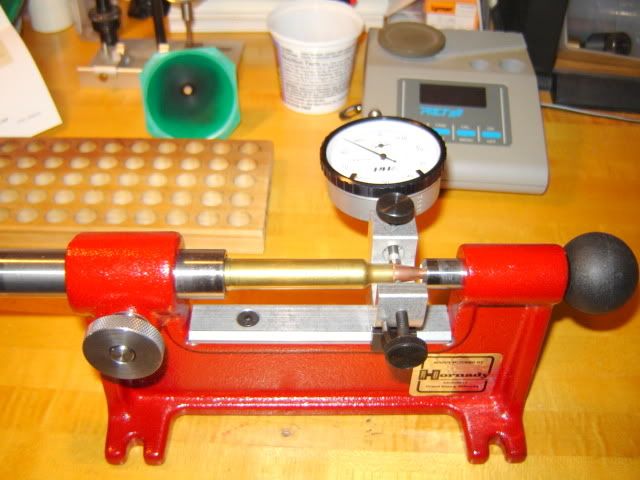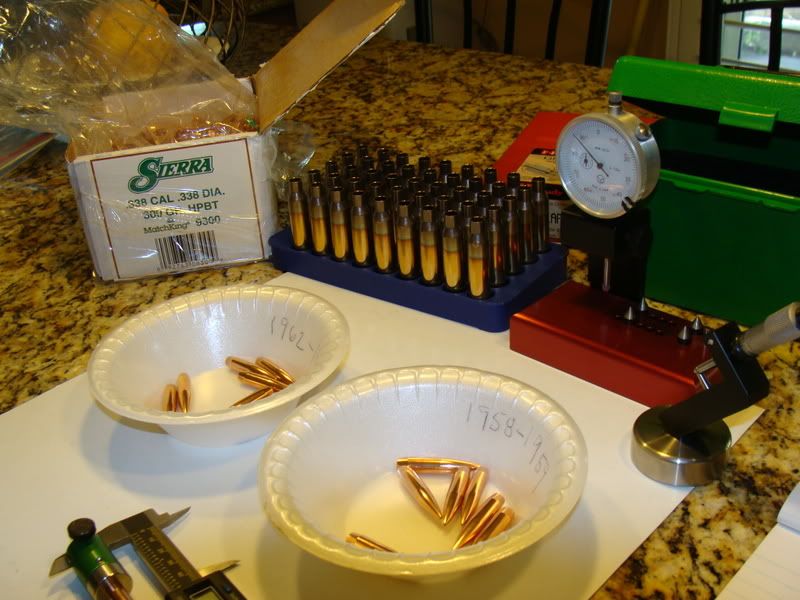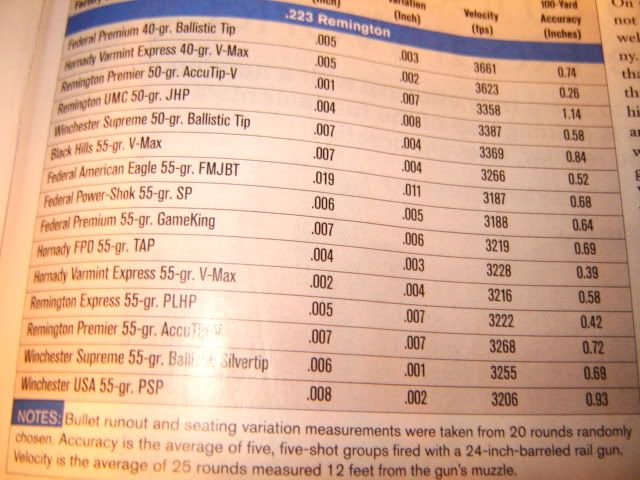Looking for input. A friend is building an 800 yd range and I want to prepare for some longer range shooting. I had a rcbs v block runnout checker and just picked up a new hornady unit that has a "correcting" screw to push the bullet in the case.
The new hornady tool supports the case from the tip of the bullet and at the base. It basically leaves the case unsupported.
The situation is after alot of spot checking past loaded ammo the hornady cannot find anything I've loaded to be over .003 tir. Yet I can find some examples with the rcbs that are .005-.006".
I've even seen .006" on the rcbs and can see the bullet wobble...yet the same case on the hornady shows .001".
I called hornady and they say their idea is the best because the bullet is in line with the center of the case and the casing imperfections don't matter.
SO I GUESS my question is....exactly how does a cartridge lie in a chamber?? I try to bump shoulders no more than .003...usually .001-.002. If I do this and chamber the round does it sort of "lift" up in the chamber and center via the bolt face and front of chamber....or does it lie at the bottom.....or does the extractor hold it at an angle in the chamber anyhow??
The new hornady tool supports the case from the tip of the bullet and at the base. It basically leaves the case unsupported.
The situation is after alot of spot checking past loaded ammo the hornady cannot find anything I've loaded to be over .003 tir. Yet I can find some examples with the rcbs that are .005-.006".
I've even seen .006" on the rcbs and can see the bullet wobble...yet the same case on the hornady shows .001".
I called hornady and they say their idea is the best because the bullet is in line with the center of the case and the casing imperfections don't matter.
SO I GUESS my question is....exactly how does a cartridge lie in a chamber?? I try to bump shoulders no more than .003...usually .001-.002. If I do this and chamber the round does it sort of "lift" up in the chamber and center via the bolt face and front of chamber....or does it lie at the bottom.....or does the extractor hold it at an angle in the chamber anyhow??







